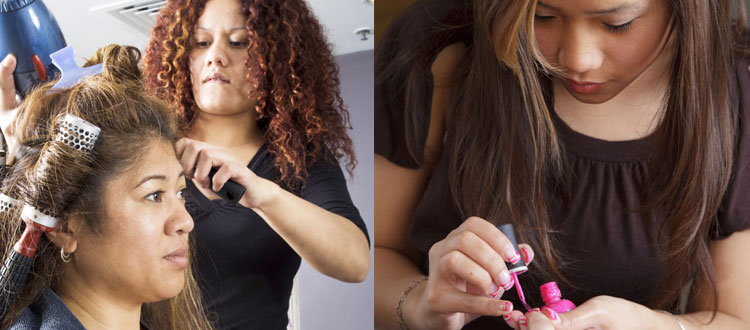The Call for Transparency in Professional Salon Products is a Big Deal
 |
|
Ruth Crystal |
Legislation was recently introduced to California, that requires manufacturers to disclose ingredients on the labels of professional cosmetics. Unlike everyday cosmetics which are required to have ingredients printed on the label, professional cosmetics are not legally required to disclose their ingredients. This may sound like a surface level bill, but even if you are not a regular salon-goer yourself, this first-of-its-kind legislation has the power to drastically alter the health, and human rights of salon workers in California.
We want to make sure that the importance of this bill is made very clear: Salon workers don’t have the same benefits in disclosure as everyday consumers when it comes to cosmetics. Not only that, salon workers are exposed to toxic chemicals from cosmetics at an exponentially higher rate than everyday consumers. Why? Because they work with these products all day long, many days a week. And they don’t know what chemicals they are being exposed to, even as their bodies react through rashes, dizziness, breathing difficulties, cancers, birth defects and more.
Salon Products and Women’s Health
As an industry that is predominantly composed of women, studies reveal that the impacts of using solvents, straighteners, and polishes on a regular basis go beyond adverse reactions, and into the rights of reproductive health. The reports show that salon workers that are exposed to chemicals found in these products have higher rates of miscarriages, gestational diabetes, birth defects, and cancer. These studies also show that salon workers have a greater risk of dying from neurological conditions including Alzheimer’s disease, pre-senile dementia, and motor neuron disease.
Some of the most hazardous chemicals found in salon products include formaldehyde (known carcinogen), toluene (neurological & developmental toxicant), sodium hydroxide (lye), and triphenyl phosphate (suspected endocrine disruptor). There are also numerous cosmetic ingredients that can cause allergies, which can only be avoided if they are listed on the label. There are specific ingredients women may especially want to avoid exposure to because they are pregnant or have a medical condition. There are also certain cosmetic ingredients that are incompatible with some salon services– such as chemicals like sulfates which can adversely affect color-treated hair. Many women are accustomed to searching the ingredient lists of the products they use at home to avoid these chemicals of concern to their health. Clearly, salon workers should have the same opportunity and right.
The Problem with Safety Data Sheets (SDSs)
Manufacturers of professional salon products are required by law to publish safety data sheets (SDSs) for every product they sell. SDSs are intended to provide information on potential hazards associated with the product. Unfortunately, the quality and availability of SDSs varies tremendously, so that salon workers are not consistently given the information they need most. SDSs are traditionally difficult to read, and most often do not list all ingredients in a product — only those classified by the manufacturer as hazardous. In some cases, no ingredients are listed on the SDS at all. (Take, for example, Fantastic Sams Lavender mint shampoo SDS with no ingredients listed.) Ingredients just linked to allergies, or for chemicals that are emerging hazards (based on new science) are rarely listed on SDSs. While well-written and comprehensive SDSs can provide useful information, these are few and far between. There is almost no enforcement of the salon product industry to ensure SDSs include all the information required or needed by salon workers to protect their health.
Salon workers are vital members of our communities, we need to fight to make sure their health safety isn’t compromised in the name of beauty. Although some salons are moving in the right direction, our current laws lack in ingredient transparency for salon products, and enforcement to comply with chemical regulation. Especially when it comes to the serious health concerns connected to the use of salon products.
Take Action to Stand with Salon Workers
It’s time for ingredient transparency, toxic chemical regulation, and manufacturing accountability. Californians — take a stand for salon worker safety. If you don’t live in California, share this blog with friends and family who do!
And remember, Californians won’t be the only ones to benefit. Legislation that passes in California tends to have a national impact because the state’s economy is the largest in the US. That means if salon products are labeled in California, it will likely push for disclosure in other states, too.
(Citations for scientific studies can be found in the full report, Beauty and Its Beast)




I can relate to the part where salon workers are exposed to these products since I have a friend who works in one. I hope that there should be bill for the workers where the products they use should be safe and will not cause harm to them and the customers. Good work in making this article.
Thank you for your continued work on behalf of salon workers everywhere. I appreciate your efforts in helping disclose what most of us already suffer from- we just didn’t know why we were getting sick. Keep up the good work because it helps not only the salon worker, but it also helps the public.